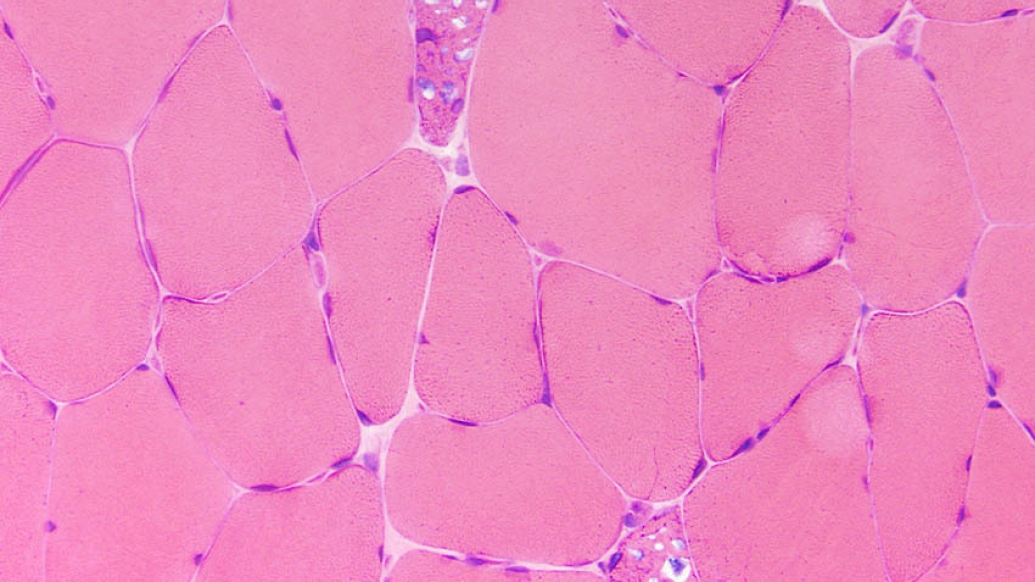A team explores the possible association between genetic variants in the human genome and liver attenuation.
8:16 AM
Author |

Glycogen storage diseases are complex conditions in which one's body cannot properly store or break down glycogen. Glycogen is a polysaccharide that is deposited in bodily tissues where it stores energy that can be broken down quickly to meet the energy demands of one's body.
"Glycogen storage diseases are rare, with most occurring in about one of every 20,000 live births; individuals with glycogen storage disease can have pathology in the liver, muscles and other areas of the body when glycogen accumulates in excess," says Elizabeth Speliotes, M.D., Ph.D., MPH, gastroenterologist and associate professor of internal medicine at Michigan Medicine. "Increased levels of glycogen in the liver increases liver computed tomography attenuation and can now be detected in any large human study where we have such imaging for analysis."
In a recent study published in The Journal of Clinical Endocrinology & Metabolism, Speliotes led a team of experts to explore the association between genetic variants throughout the human genome and liver attenuation in over 15,000 individuals across multiple populations.
The team found one variant in a noncoding region of genome that significantly increased liver attenuation: "When it came down to the ancestry of the patients in our study, the variant was present in about 1% of Asian individuals, 8% of European individuals, 12% of African individuals and 18% of Hispanic individuals. So, it is much more common than traditional glycogen storage disease variants in the population," says Speliotes.
MORE FROM THE LAB: Subscribe to our weekly newsletter
Yue Chen, Ph.D., who is also a lead author of the study and a research scientist at the University of Michigan, notes that by "using CRISPR-Cas9, we were able to create a small deletion that encompassed the area where the genetic variant lay in a human liver cell line. This showed us that this change results in an increased glycogen accumulation to create a cell line model of the corresponding human disease."
The team also found that this noncoding variant causally promotes all aspects of human metabolic syndrome in two large patient groups, including the Michigan Genomics Initiative.
According to their research, the variant promotes an increase in body mass index, waist circumference, the risk of developing diabetes, blood pressure and serum triglycerides. It also leads to a decrease in the serum high-density lipoprotein, or HDL, cholesterol.
Speliotes says that usually, individuals that have three or more of the five components of metabolic syndrome are predisposed to having heart attacks. However, the team of investigators found that this variant actually protects individuals from developing heart disease.
"This could be due to the fact that the variant strongly decreased serum low-density lipoprotein – or LDL – cholesterol, which is known to predispose individuals to heart attacks," she says. "This is interesting because it suggests that we can find causal pathways that separate triglyceride from LDL pathologies."
Like Podcasts? Add the Michigan Medicine News Break on iTunes, Google Podcast or anywhere you listen to podcasts.
Speliotes adds that exercise is known to increase HDL, while sedentary behavior decreases it and both of these improve and worsen metabolic health, respectively. The molecular explanation for these associations is not known, however.
"Results from our study would suggest that the possible underlying cause of both low HDL and metabolic syndrome could be tissue glycogen accumulation," says Speliotes. "By finding pharmacologic ways to decrease the tissue storage of glycogen, we may be able to treat individuals with metabolic syndrome."
Lastly, Bratati Kahali, Ph.D., who is also a lead author on the study and former U-M post-doctoral fellow, says that "while the role of the noncoding genome in promoting diseases is debated, our results prove that altering a noncoding region can cause human disease. The noncoding genome is vast in comparison to the coding genome, which has been much more studied to date. Further research into the functions of the noncoding genome will help us understand more about human disease."
Paper cited: "A Noncoding Variant Near PPP1R3B Promotes Liver Glycogen Storage and MetS, but Protects Against Myocardial Infarction," The Journal of Clinical Endocrinology & Metabolism. DOI: 10.1210/clinem/dgaa855

Explore a variety of health care news & stories by visiting the Health Lab home page for more articles.

Department of Communication at Michigan Medicine
Want top health & research news weekly? Sign up for Health Lab’s newsletters today!





